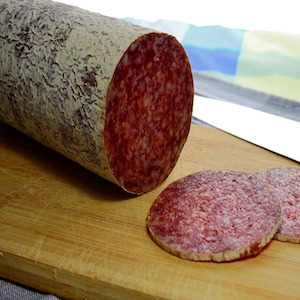Investigation on the microbiological hazards in an artisanal salami produced in Northern Italy and its production environment in different seasonal periods

Submitted: 2 September 2022
Accepted: 23 January 2023
Published: 8 March 2023
Accepted: 23 January 2023
Abstract Views: 1632
PDF: 291
HTML: 14
HTML: 14
Publisher's note
All claims expressed in this article are solely those of the authors and do not necessarily represent those of their affiliated organizations, or those of the publisher, the editors and the reviewers. Any product that may be evaluated in this article or claim that may be made by its manufacturer is not guaranteed or endorsed by the publisher.
All claims expressed in this article are solely those of the authors and do not necessarily represent those of their affiliated organizations, or those of the publisher, the editors and the reviewers. Any product that may be evaluated in this article or claim that may be made by its manufacturer is not guaranteed or endorsed by the publisher.
Similar Articles
- Pierluigi Polese, Manuela Del Torre, Mara Lucia Stecchini, Praedicere Possumus: An Italian web-based application for predictive microbiology to ensure food safety , Italian Journal of Food Safety: Vol. 7 No. 1 (2018)
- Frédérique Pasquali, Lucia Gambi, Alessandra De Cesare, Cecilia Crippa, Vasco Cadavez , Ursula Gonzales-Barron , Antonio Valero, Fouad Achemchem , Alex Lucchi, Antonio Parisi, Gerardo Manfreda, Resistome and virulome diversity of foodborne pathogens isolated from artisanal food production chain of animal origin in the Mediterranean region , Italian Journal of Food Safety: Vol. 11 No. 4 (2022)
You may also start an advanced similarity search for this article.

 https://doi.org/10.4081/ijfs.2023.10831
https://doi.org/10.4081/ijfs.2023.10831




